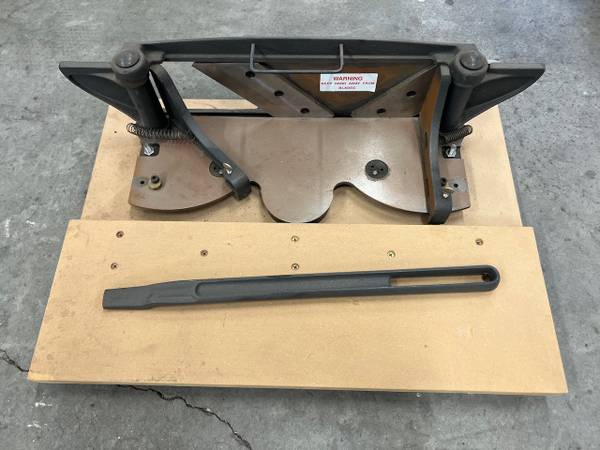If you do this at the shop, the small band saw would have the finest teeth for the smoothest cut. Again, do some trial cuts first to get the miter gauge set right.t
But I think I would try a frame shop first.
If you do this at the shop, the small band saw would have the finest teeth for the smoothest cut. Again, do some trial cuts first to get the miter gauge set right.t
But I think I would try a frame shop first.
Thank you all for the advice. The artist (who bought the frame for us) is working on getting the frame supplier to send a replacement. If that falls through I’ll try (with help) the methods mentioned here. To top it off, once the frame is recut the inner frame dimensions will have to be routed out (or whatever method is best) to make room for the canvas.
Appreciate the help!
-Rye
If done right, tear out can be minimized and limited to the back (unseen) side
A few more questions as others respond:
I haven’t looked into (googled around) how to minimize tear out but I have an idea of putting wall-tack material (kind of like silly-puddy) where the blade will be cutting through the material, perhaps this could lessen the damage done to the painted edge. Any thoughts??
Thanks again,
-Rye
Wouldn’t this be tool to use ?

Bill
I had to google around to figure out what that tool was … “Miter Trimmer”
Yes! @wjt Is this available at the makerspace to use (I don’t see it in the tool list)? Or if this is a personal tool would you be up for helping me trim up the angles on my frame?
Thank you!
Check with the Woodshop lead as to tool availability at the MakerSpace.
I do not have one.
Bill
tl;dr - there is no tl;dr. everything I type is worthy of being read! ![]()
I am not aware of one at the space.
I suppose that is a possibility. The Saw Stop does have a bypass mode for situations like that, but it is not something that any authorized users have been trained on and I’m not sure what special authorization might be best for use. Certainly, there is an increased risk associated with using the bypass mode, but the machine, and most of the rest of the machinery at the west end of the building already comes with an inherent risk, including severe injury, dismemberment, or death. This is something that I would like to discuss with @squarenuts because there are a lot of situations where I believe the benefits are worth it. For example, cutting down sheets that have been previously cut on the laser cutter.
Let me start by saying that I rarely do things the simplest way, but I strive for accuracy and repeatability, which often has the side effect of making setup of the actual work far faster. That out of the way, any time a blade is leaving an “exit wound” on a workpiece, there is a chance of tearout. That could be a spinning blade like the mitersaw or the tablesaw, or a bandsaw blade, or a router bit, or a drill bit, etc.
There are many different ways of reducing tearout. Scroll saws have reverse tooth blades, and there are compression router bits, that can be used to minimize the tear out by always making the cut “into” the wood. (In fact, like a milling machine, the router (shop bot) can be setup to make precise cuts like this. More on this in a moment.) Of course, there is still a s rotary motion that can cause tearout at the side/end of the cut, but it can be limited on the top and bottom. Eliminating or reducing tearout at the ends of a cut is often done by using some sort of sacraficial backer board, much like you would do with the zero clearance throat plate in the table saw or the zero clearance fence on the miter saw. I mentioned using the shop bot for something like this. With a backer board in place at the end of each cut, the tearout can be reduced or eliminated. This method comes with the added benefit of being able to cut a test piece to check the fit before making cuts on the real deal. This is also not the simplest way, far from it, but it is one I would think of as kind of fun, and the shop bot is going to do a pretty good job of hitting 45 degrees on the first try.
You can do a lot to minimize tearout by using a high tooth count blade, regardless of the machine. Slow feed rates also help. Both of these methods help by taking a smaller bite of wood, so any tearout or splintering is proportionally smaller. Combined with the steps above, this will do well at minimizing damage to the workpiece. From a practical standpoint, this is also the method I would use.
To each their own, but this would be my next to last choice, second only to the scroll saw or a jig saw. Ok, that makes it the third to last choice. While a bandsaw can leave a nice finish, I would not consider the cut edge to be high enough quality for a frame or cabinet work, without additional finishing, such as the belt sander.
That’s more than you probably wanted, and surely more than most will read, but it’s my 2.8¢